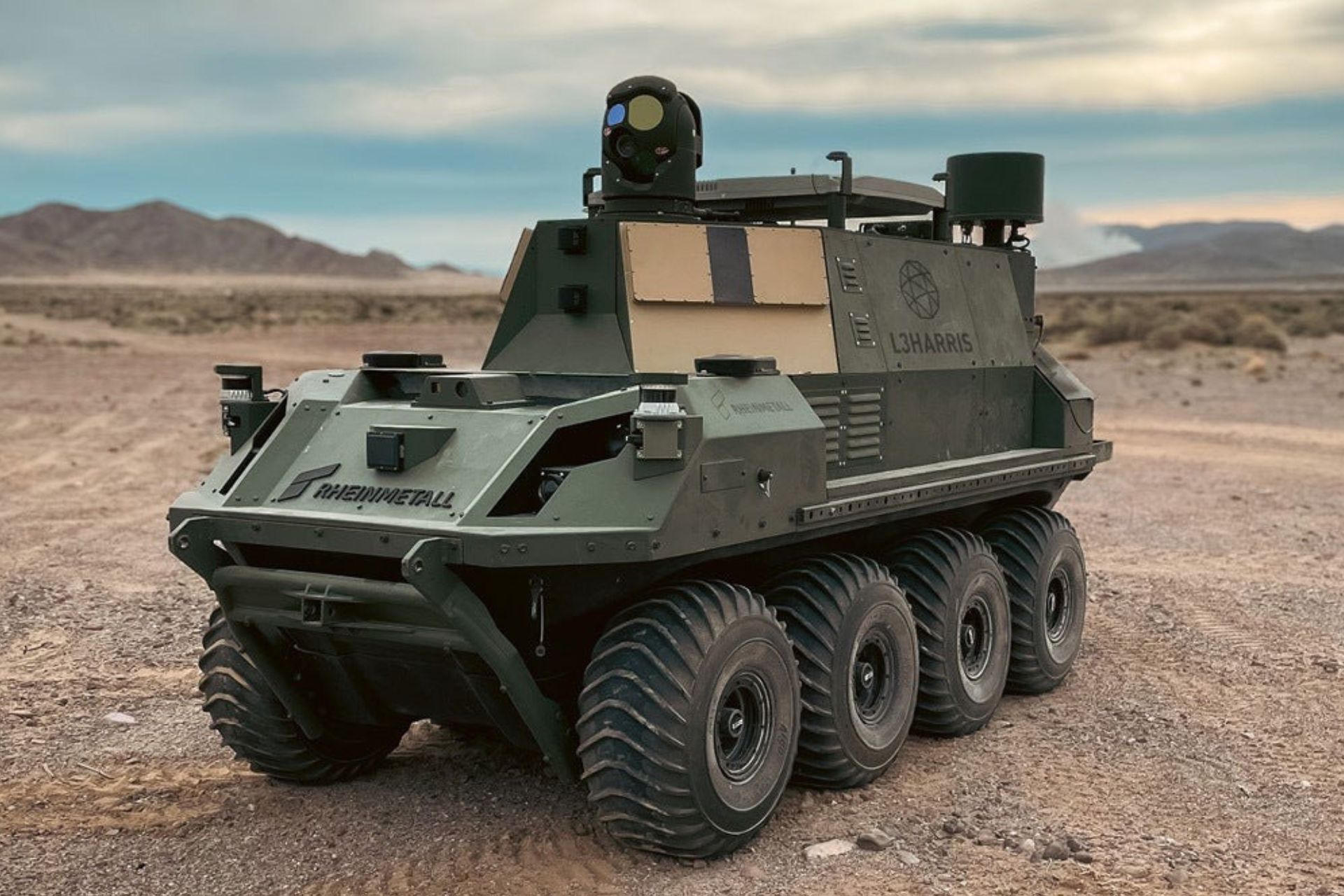Breaking News
L3Harris Unveils Autonomous UGV Air Defense Prototype at Project Convergence Capstone 4.
On August 7, 2024, L3Harris announced the successful testing of a new autonomous air defense prototype during the Project Convergence Capstone 4 (PC-C4) exercise. This prototype, developed by the company’s Agile Development Group, integrates long-range surveillance and electronic warfare capabilities onto an autonomous combat vehicle based on a Rheinmetall UGV chassis, aimed at enhancing ground-based air defense with beyond-line-of-sight (BLOS) operations.
Follow Army Recognition on Google News at this link

The prototype's tests also included evaluations of its reconnaissance, surveillance, and target acquisition capabilities using the WESCAM MX-10D multi-sensor imaging system (Picture source: L3 Harris)
The tests were conducted over six days, covering approximately 175 kilometers of varied terrain, and evaluated the prototype in various mission scenarios. These scenarios included electronic warfare and surveillance against unmanned aerial systems (UAS), where the system used an autonomous multi-sensor cross-cueing payload to detect aerial threats at distances exceeding 26 kilometers.
Jennifer Lewis, President of Airborne Combat Systems at L3Harris, commented on the test results, noting that the adaptability and innovation of the team led to a successful demonstration of the prototypes, providing valuable insights for future developments and operational decisions.
The prototype's tests also included evaluations of its reconnaissance, surveillance, and target acquisition capabilities using the WESCAM MX-10D multi-sensor imaging system. Additionally, various communication solutions were tested, such as the RASOR modular communications chassis and the Mobile Ad Hoc Network WRAITH, to assess their integration and performance in mission-relevant scenarios.
The results of these tests suggest that autonomous air defense systems could potentially offer more flexible and responsive protection for ground units, with the ability to operate over extended ranges beyond the traditional constraints of data links. The development also indicated that automating certain payload functions could be crucial in maintaining mission effectiveness in the event of communication disruptions.
While the prototype demonstrated promising capabilities, further analysis and development will be necessary to determine how such systems can be effectively integrated into existing defense frameworks and whether they can meet the evolving needs of future military operations.
Through this project, L3Harris demonstrates a promising path forward for the evolution of air defense systems, aiming to enhance capabilities while reducing risks for soldiers.


























